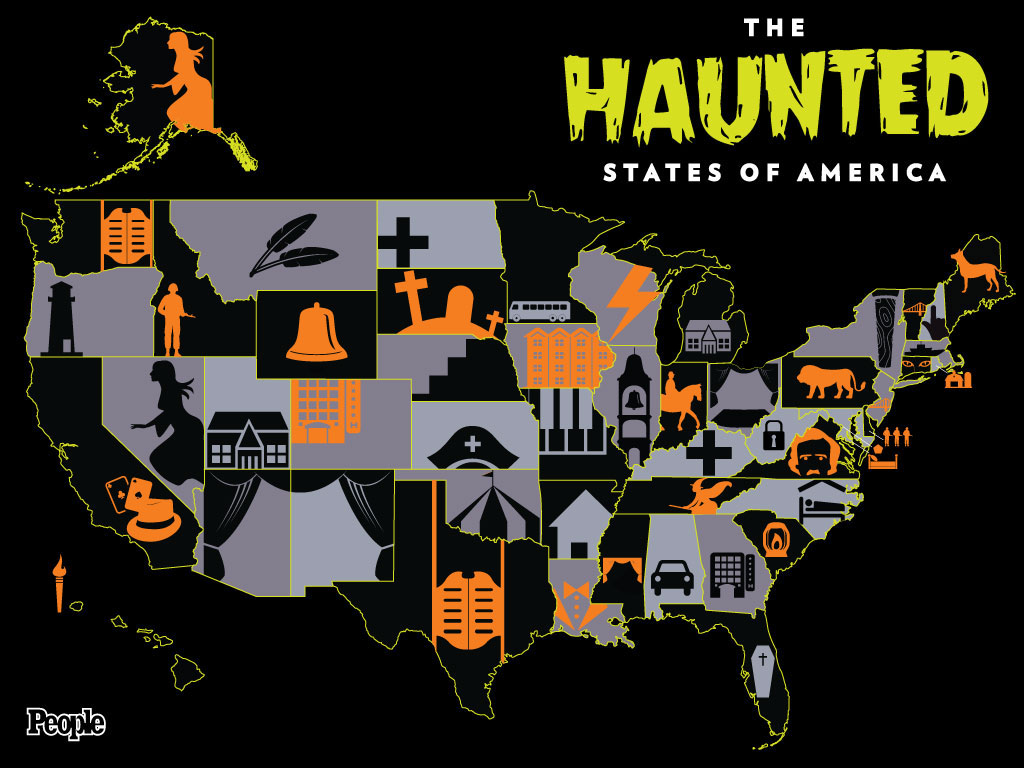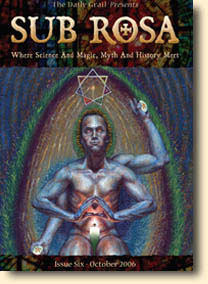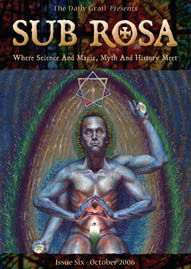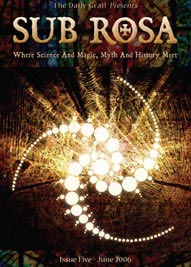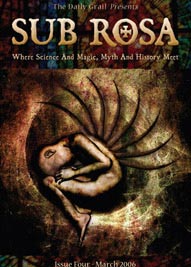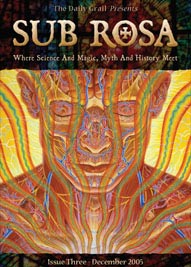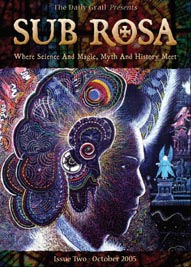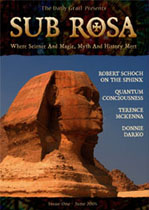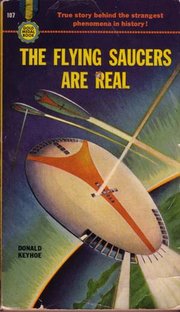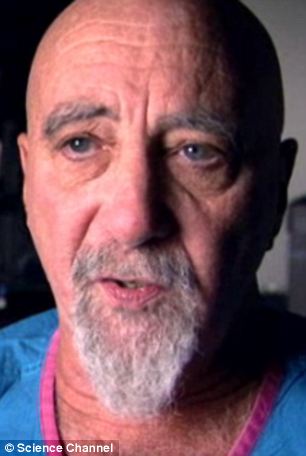Part of this NDE has to do with ideas possibly upsetting to some to think the Prophets of the Bible as having mental illness.
I hope everyone knows by now that I am no longer out to disprove anyone regarding anything.
It is just an interesting read, which is the criteria I try to keep firstly.
Enjoy!
The Trigger of Psychosis: Dr. Kay Jamison's Near-Death-Like Experience
[TABLE="width: 790"]
[TR]
[TD="class: auto-style25"][TABLE="width: 790"]
[TR]
[TD="class: auto-style26, align: left"]
[/TD]
[TD="class: auto-style27"]
Mental illness can trigger religious revelations, visions and even out-of-body and near-death-like experiences.
On this web page you will discover that mental illness is probably not what you might think it is; and that mental illness is not what Hollywood portrays it to be.
You will read about one of the most distinguished scientists in the mental health field and her NDE which was triggered by a manic-depressive psychosis.
Along with this case, you will also learn the relationship between schizophrenia and OBEs, and the difference between being psychic and being psychotic among other things.[/TD]
[/TR]
[/TABLE]
[/TD]
[/TR]
[TR]
[TD="class: auto-style28, bgcolor: #F4F4FF"]
[/TD]
[/TR]
[TR]
[TD="class: auto-style34, bgcolor: #F4F4FF"]
1. Schizophrenia and Out-of-Body Experiences[/TD]
[/TR]
[TR]
[TD="class: auto-style25"]
The term schizophrenia literally means "split mind" but it has nothing to do with so-called "split personalities" or "multiple personality disorder" (which is now known as dissociative identity disorder.)
Schizophrenia is a genetic brain disease with common symptoms being delusions that include paranoia, visual and auditory hallucinations, and disorganized thinking and speech accompanied by significant social dysfunction manifesting as psychosis.
Schizophrenia has been described as a waking, perpetual nightmare by those afflicted by it.
Approximately 1% of the world's population is currently afflicted with schizophrenia.
Social withdrawal, sloppiness of dress and hygiene, and loss of motivation and judgment are all common in schizophrenia (Carson, 2000).
In one uncommon subtype (catatonic schizophrenia), the person may be largely mute, remain motionless in bizarre postures, or exhibit purposeless agitation, all signs of catatonia.
About 30% to 50% of people with schizophrenia do not accept their condition or its treatment.
People with schizophrenia often find facial emotion perception to be difficult.
People with a family history of schizophrenia who suffer a transient psychosis have a20-40% chance of being diagnosed one year later.
The first-line psychiatric treatment for schizophrenia is antipsychotic medication, such as risperidone, which can reduce some of the symptoms of psychosis in about 7-14 days.
There is also scientific evidence of a relationship between schizophrenia and out-of-body experiences according to a study performed by Dr. Sohee Park, a neuroscientist from Vanderbilt University who works on schizophrenia.
The test subject, known only as RM, had his first OBE at the age of 16.
By the time he was 55, he has had more OBEs than he can remember.
They usually happen just before falling asleep - for 10 minutes - then he views himself floating above his body and looking down on himself (called "autoscopy".)
If the same thing happens while he is awake, his sense of displacement is stronger and his real body feels like a marionette while his out-of-body self feels like a puppeteer.
Then his OBE soon changes into religious delusions in which he communicates with angels and demons; and psychotic episodes follow.
After four or five days of this, RM is then hospitalized.[/TD]
[/TR]
[TR]
[TD="class: auto-style33"][/TD]
[/TR]
[TR]
[TD="class: auto-style36, bgcolor: #F4F4FF"]
2. The Brilliant Madness of Bipolar Disorder[/TD]
[/TR]
[TR]
[TD="class: auto-style25"]
Bipolar disorder (or manic depression) has been called a "brilliant madness" because of the expansive ideas psychosis can create.
In days of old, people recognized how mental illness can even be a gift.
Socrates once declared, "Our greatest blessings come to us by way of madness, provided the madness is given us by divine gift."
Plato referred to insanity as: "a divine gift and the source of the chief blessings granted to men."
Native American Indians believed that their voice hearers (shamans) revealed messages that had great spiritual significance.
The archetype of the "mad scientist" can be traced to Nikola Tesla (1856-1943), the Serbian American scientific inventor-genius and NDEr best known his astounding contributions to modern science and over 700 patents.
Tesla is responsible for the invention of the electric motor, alternating electrical current, the radio, x-ray technology, remote control, robotics, the laser, florescent light bulbs, wireless communications, limitless free energy, and the magnifying transformer which became the basis for television transmission.
Yet he also suffered from mental illnesses - specifically obsessive-compulsive disorder (OCD), attention deficit disorder (ADD) and bipolar disorder.
He also suffered from numerous psychological phobias and philias such as columbiphilia (an unusual love of pigeons), kakiphobia (the fear of dirt), scotophilia (the love of the dark), pathophobia (the fear of germs), spherophobia (the fear of round objects), triphilia (an obsession with the number 3), and an uncontrollable visual and auditory visions that often tormented him which could be described as bipolar hallucinations.
He also believed he was in contact with extraterrestrials on the planet Mars.
Tesla experienced a NDE as a child which makes one wonder if his "brilliant madness" was the result of his NDE.
As a teenager, he was swimming in the river near his hometown in Croatia.
To impress his friends he dove and swam underwater to a diving dock some distance away from the shore, intending to swim under it and emerge where his friends couldn't see him.
He swam until he was sure he was clear of the dock and came to the surface.
He banged his head on a beam under the dock.
He swam farther and came up again, and hit his head once more.
Now out of breath, he had an out-of-body experience which gave him a view of the entire floating dock and realized that he could come up to a point between the slats and breathe that way.
Luckily for him, the strategy worked.
It still took him many attempts before he reached open water.
Telsa would also exhibit grandiose thoughts which intelligent mentally ill people can have.
John Nash, a lifetime schizophrenic, received the Nobel Laureate in Economics and his life was portrayed in the movie A Beautiful Mind.
Other famous mentally ill people are: Leo Tolstoy and Earnest Hemingway (both NDErs), Ludwig van Beethoven, Vincent Van Gogh, John Keats, Charles Dickens, William Faulkner, F. Scott Fitzgerald, Ralph Waldo Emerson, and Virginia Woolf, to name just a few.
The nature of schizophrenia and other forms of psychosis are still under debate and a significant issue is the relationship between psychosis and the mystical, or religious, experience.[/TD]
[/TR]
[TR]
[TD="class: auto-style33"][/TD]
[/TR]
[TR]
[TD="class: auto-style36, bgcolor: #F4F4FF"]
3. A Near-Death-Like Experience Triggered by Psychosis[/TD]
[/TR]
[TR]
[TD="class: auto-style25"]
[TABLE="width: 100%"]
[TR]
[TD="align: left"]
[/TD]
[TD="class: auto-style27"]
Dr. Kay Redfield Jamison is the distinguished Professor of Psychiatry at the John Hopkins School of Medicine and co-author of the standard medical text taught there.
Dr. Jamison is one of the foremost authorities on manic depressive illness. She is also a manic depressive herself.
In her highly acclaimed book entitled An Unquiet Mind, Dr. Jamison describes a psychotic episode she had which transported her consciousness out of her body and into the solar system.
Her near-death experience is similar to the out-of-body experience of Susan Blackmore's when she was under the influence of a psychedelic.
Jamison's consciousness traveled to Jupiter while she was enjoying the manic phase of her mental illness.
The following is an excerpt from her excellent book and the account of her journey.[/TD]
[/TR]
[/TABLE]
[/TD]
[/TR]
[TR]
[TD="class: style1, align: center"][TABLE="class: auto-style30, width: 711, align: center"]
[TR]
[TD]
"People go mad in idiosyncratic ways.
Perhaps it was not surprising that, as a meteorologist's daughter, I found myself, in that glorious illusion of high summer days, gliding, flying, now and again lurching through cloud banks and ethers, past stars, and across fields of ice crystals.
Even now, I can see in my mind's rather peculiar eye an extraordinary shattering and shifting of light; inconstant but ravishing colors laid out across miles of circling rings; and the almost imperceptible, somehow surprisingly pallid, moons of this Catherine wheel of a planet.
I remember singing 'Fly Me to the Moon' as I swept past those of Saturn, and thinking myself terribly funny.
I saw and experienced that which had been only in dreams, or fitful fragments of aspiration.
"Was it real?
Well, of course not, not in any meaningful sense of the word real.
But did it stay with me?
Absolutely.
Long after my psychosis cleared, and the medications took hold, it became part of what one remembers forever, surrounded by an almost Proustian melancholy.
Long since that extended voyage of my mind and soul, Saturn and its icy rings took on a elegiac beauty, and I don't see Saturn's image now without feeling an acute sadness at its being so far away from me, so unobtainable in so many ways.
The intensity, glory, and absolute assuredness of my mind's flight made it very difficult for me to believe, once I was better, that the illness was one I should willingly give up.
Even though I was a clinician and a scientist, and even though I could read the research literature and see the inevitable, bleak consequences of not taking lithium, I for many years after my initial diagnosis was reluctant to take take my medications as prescribed.
Why did it take having to go though more episodes of mania, followed by long suicidal depressions, before I would take lithium in a medically sensible way?"[/TD]
[/TR]
[/TABLE]
[/TD]
[/TR]
[TR]
[TD="class: auto-style25"]
Dr. Jamison says she still misses Saturn and the tremendous highs that go with manic depression; but the lithium (a simple salt/electrolyte) keeps her level and able to function as a normal person.
One might say that this simple mineral found in the Earth keeps manic depressives well grounded there.
Such experiences with the planets of our solar system is not unique to Redfield.
In the 1970s, Ingo Swann (1933-2013), one of the most gifted OBE travellers ever to work under laboratory conditions in the U.S., carried through with a number of OBE journeys to various planets in our solar system while under laboratory conditions.
Swann is considered "the father of remote viewing" and participated in the CIA's secret psychic program called the Stagate Project.
Swann was involved in a study by the Stanford Research Institute (SRI), the second largest "think tank" in the world, to see if his remote viewing powers could extend to the planet Saturn.
On the evening April 27, 1973, SRI researchers recorded Swann's remote viewing session of the planet Jupiter and Jupiter's moons, prior to the Voyager probe's visit there in 1979.
The results of this study were published in the book entitled Mind-Reach: Scientists Look at Psychic Abilities.
Swann asked for 30 minutes of silence while it took Swann about three and a half minutes to remotely view Jupiter.
In the session he gave accurate reports on the physical features of Jupiter, such as its surface, atmosphere and weather.
Swann's statement of Jupiter having planetary rings, like Saturn, was controversial at the time.
The 1979 Voyager probe later confirmed the existence of the rings.
In a later setting, he visited the planet Mercury (and later Jupiter, under the same circumstances).
Much to the gaping amazement of NASA scientists, all of his observations were later proved to be correct by probes sent to these planets (see Dr. Janet Lee Mitchell's "A Psychic Probe of the Planet Mercury," Journal of the Society for Psychical Research 6, No. 4 (June 1975): pp. 17-21; and Mitchell, 1981.)[/TD]
[/TR]
[TR]
[TD="class: auto-style25"]
[/TD]
[/TR]
[TR]
[TD="class: auto-style34, bgcolor: #F4F4FF"]
4. The Dreaming God of the Bible[/TD]
[/TR]
[TR]
[TD="class: auto-style25"]
Psychosis and religious visions have often been associated with each other since the earliest recorded history. Mental illness has traditionally been related to demon possession and prophetic ability as attributed to various personalities in the Bible.
Saints such as Joan of Arc (1415 -1431) and Francis of Assisi (1182 -1226) heard multiple voices in their heads and the Church originally attacked them as being demon possessed.
Of course, not all prophets were mentally disturbed people, many just practiced a kind of clairvoyance but remained balanced people, some even with a healthy critical intellect.
So there is a very important note to make here: we must assume that people suffering from schizophrenia who are having religious hallucinations of God, may in fact be having real visions of a real God.
The Talmud suggests that the prophet Hosea (8th century BCE) in the Bible was besieged with delusions of being Moses, even though the Talmud also claims that he was also the greatest prophet of his generation (Pesachim 87a).
Skeptics often claim NDEs to be merely hallucinations because of their subjective nature.
But this begs the question of what exactly is the difference between subjective and objective consciousness given the fact that scientists are not exactly certain what consciousness is.
Or for that matter, what is the difference between a hallucination, a dream, a religious experience or any phenomena involving consciousness.
Skeptics must first define what consciousness is before labeling any experience involving consciousness as being a hallucination; and this is something science has so far been unable to do.[/TD]
[/TR]
[TR]
[TD="class: auto-style25"]
[/TD]
[/TR]
[TR]
[TD="class: auto-style36, bgcolor: #F4F4FF"]
5. A Psychoanalysis of the Hebrew Prophets[/TD]
[/TR]
[TR]
[TD="class: auto-style25"]
Not all mental health practitioners consider the symptoms of schizophrenia to be mental illness.
Some consider it a ‘moral verdict’ concerning certain forms of unacceptable or unintelligible behavior (Sorbin, T.B. and Monuso, J.C., , Schizophrenia: Medical Diagnosis or Moral Verdict, Pergamon, N.Y., 1980, quoted in Coleman 353.)
This kind of behavior may indeed be culturally-bound (T. Szasz, The Myth of Mental Illness, in Schiff, T., ed. Mental Illness and Social Process, Harper Row, N.Y., 1967, and Laing R.D., The Divided Self, Twentieth Publications, London, 1960.)
William Blake, the great English poet, artist and religious thinker has been labeled schizophrenic (Coleman, J.C., Butcher, J.N., and Carson, R.C., Abnormal Psychology and Modern Life, Scott, Foresman and Co., Glenview, Ill.,1984, pg. 379.)
With this in mind, it is possible to evaluate the mental health of various personalities in the Bible.
Of course, to do this, one must assume the Biblical accounts of these personalities are accurate and can be accepted at face value.
The psychologist Dr. Herman H. Somers (1921-2003) was a former Jesuit priest for forty years until he became a religious skeptic after discovering psychopathological elements in the utterances of some Biblical prophets.
In June 1990, he published a voluminous book dealing with the Old Testament prophets called, When God Slept, Man Wrote the Bible translated from Dutch to English.
Basically, it is the Bible explained by a psychologist.
Here are some of the book's most striking points:[/TD]
[/TR]
[TR]
[TD="class: auto-style25"]
[/TD]
[/TR]
[TR]
[TD="class: auto-style41, bgcolor: #FDEDD9"]
a. Dr. Somers' Diagnosis: The Prophet Hosea[/TD]
[/TR]
[TR]
[TD="class: auto-style45"]
What is important for us is to understand is whether Hosea’s vision can be seen as a legitimate vision of God; or at best can it be called a "cultural aberration" or at its worst the writings of a schizophrenic? [Webmaster Note: I disagree with this characterization because it is possible for Hosea's vision to be all three.]
Many schizophrenics assume they have lost their former selves and have taken on a new identity ... some believe that they are now someone else and attempt to assume the name and characteristics of the other person (Buss, A., Psychopathology, John Wiley, N.Y., 1966, pgs. 188-191).
Hosea seems to have developed his own message of God telling him to marry a prostitute in Hosea 3 and it appears Hosea’s grasp of reality had disintegrated, as occurs to schizophrenics.
In the latter part of his book (Hosea 4-14) Hosea describes a form of idolatry which was in fact not prevalent in Assyrian influenced Israel.
Political problems abounded, both internally and externally motivated, but the temple cults were relatively clean of idolatry.
Thus there appears a confusion between reality as Hosea seems to mix metaphors and reality.
Jeremiah, a century later, also describes a political suicidal situation, and he does use the metaphor of idolatry to describe it.
However Ezekiel, who lived at the same time described idolatry as a sin of the past as if it were present - see below.
While Amos, Hosea, Jeremiah and Ezekiel are all burdened with impossible missions and hence suffer immeasurably from their task, Amos and Jeremiah reactions are within the normal range.[/TD]
[/TR]
[TR]
[TD="class: auto-style25"]
[/TD]
[/TR]
[TR]
[TD="class: auto-style41, bgcolor: #FDEDD9"]
b. Dr. Somers' Diagnosis: The Prophet Isaiah[/TD]
[/TR]
[TR]
[TD="class: auto-style39"]
For a more tragic example, we turn to Isaiah, the "man of sorrow."
He had a schizophreniform accident, a vision with schizophrenic contents, which deeply influenced his further thought, but did not form a chronic condition of schizophrenia.
In this vision, he has sensory hallucinations, catastrophic revelations, and a strong delusion of being chosen by God to serve a mission.
This will condition his self-image and his "prophetic" style of logorrhea, emotional exaggeration, and making predictions.
Taking into account that some of Isaiah's successful "predictions" are in fact later interpolations, we find that the remaining authentic predictions are little more than expressions of the prophet's own vengefulness and wishful thinking.
Liberation theologians get a kick out of Isaiah's tirades against the mighty and the successful (who will be wiped away when the Lord cometh), thinking that he was a kind of social revolutionary; in fact, he was just another typical unhappy man who developed both an intense vengefulness against the successful and a, delusion of being special in a supernatural way.
Unhappy and vengeful people are keen observers and critics of others' faults.
And who will believe that Isaiah's walking barefoot and naked for three years (Isaiah 20:2-4) is not abnormal behavior but a deliberate sign of warning?[/TD]
[/TR]
[TR]
[TD="class: auto-style25"]
[/TD]
[/TR]
[TR]
[TD="class: auto-style41, bgcolor: #FDEDD9"]
c. Dr. Somers' Diagnosis: The Prophet Jeremiah[/TD]
[/TR]
[TR]
[TD="class: auto-style39"]
Jeremiah, the prophet of doom par excellence, is a clear case of paranoia querulans.
Israel has fallen and will be punished.
The king of Babylon who subdues Israel is merely God's punishing arm; which will not save him, the idolater, from equally being punished in the end.
Jeremiah is against everyone, including rivaling godmen and prophets, and God's revenge will be total.
His immense hatred for everyone who disagrees and his hammering on always the same allegations and promises of doom, and a secondary delusion of being persecuted, are typical signs of querulous paranoia.
As Dr. Somers writes: "The book Jeremiah teaches us nothing about God, it illustrates how a sick mind pictures God in terms of his own delusion." [Webmaster Note: It appears Dr. Somer's use of the slang phrase "sick mind" reveals his bias against religious mentally ill people as being revelators of God.]
Jeremiah shows a characteristic trait of the paranoia patient: a deadly hatred against everyone who disagrees with him, a totally disproportionate reaction to the "other opinion" inspired by hurt narcissism.
The inflated ego is invested with divine dignity and power.
Whoever speaks up against God, must die.
In a sense, this is a diagnosis of not only Jeremiah, but of prophethood itself.[/TD]
[/TR]
[TR]
[TD="class: auto-style25"]
[/TD]
[/TR]
[TR]
[TD="class: auto-style41, bgcolor: #FDEDD9"]
d. Dr. Somers' Diagnosis: The Prophet Ezekiel[/TD]
[/TR]
[TR]
[TD="class: auto-style45"]
Ezekiel, who lived in the Babylonian exile, reiterated the condemnation of unfaithful Jerusalem by his contemporary Jeremiah.
But he is of a different psychological type: he is not aggressive towards his audience, rather he is indifferent. The evil has been done, the catastrophe is sure to follow, whether people listen or not. Ezekiel is an unmistakable case ofschizophrenia.
In the 22 years (592-570 BCE) covered by the book Ezekiel, we see a typical development of this condition: he gets hallucinatory visions, develops an increasingly bizarre behavior, isolates himself.
In moments of calm, he relates his visions to others and gives detailed descriptions.
Not every schizophrenia patient makes it to the status of prophethood.
Ezekiel was not an extreme case, and he was a literate man who could somehow make his visions relevant through religion, which made them interesting for the Bible editors.
It was also his initial deep religiosity that made him vulnerable to emotional collapse when Jerusalem fell, its temple usurped by Baal priests, and the people (at least, the elite) forced into exile in Babel.
Unlike many fellow Hebrews, he could not adapt to this Pagan city full of opportunity, and his emotional collapse developed into a permanent mental affliction. [Webmaster Note: Ezekiel heard a voice commanding him to lie on the right side of his body for 390 days then switch to his left side for 40 more days. A voice also told him to eat food cooked with human excrement.][/TD]
[/TR]
[TR]
[TD="class: auto-style25"]
[/TD]
[/TR]
[TR]
[TD="class: auto-style41, bgcolor: #FDEDD9"]
e. Dr. Somers' Diagnosis: The Prophet Enoch[/TD]
[/TR]
[TR]
[TD="class: auto-style39"]
The last Old Testament prophet we must mention in this brief survey, is Enoch.
His book (mid-second century BC) is classed as apocryphal, but it is an integral part of the prophetic tradition.
Enoch was a staunch Pharisee and leader of the Essene sect.
Probably he was the sect's "teacher of righteousness," mentioned in the so-called Dead Sea Scrolls unearthed at Qumran.
It is he who first applied the notion of the "Son of Man" (developed by Daniel as pertaining to the Israelite nation as a whole) to himself, which personalized notion Jesus in turn was to interpret as applying to himself.
There can be no doubt that Jesus borrowed from Enoch: the New Testament contains 64 almost literal quotes from Enoch, plus other types of references [Webmaster Note: According to Edgar Cayce, Enoch was a previous incarnation of Jesus Christ.]
The Book of Enoch contains the writings of someone suffering from paranoid schizophrenia (with all the typical features of schizophrenia as Karl Jaspers described them).
And it is these Enochian visions which constitute an essential component of the belief system of Jesus and his disciples.
Once more, it should not surprise us that someone with such an affliction could be the recognized leader of a sect.
Among other factors, people with a distorted consciousness are often capable of feats of asceticism which require tremendous will-power in ordinary mortals.
And the common people of those days would naturally associate the abnormal with the supernatural, especially if it came clothed in the language of religion.
But remarkably, in the case of Enoch, at least the guardians of the official religious tradition were suspicious of the divine character of Enoch's book, mostly because of its very open self-centeredness.
The typical thing with all people suffering from delusions, is that these delusions are very self-centered and allot special importance to the sufferer.
But in the case of Enoch, it was conspicuous even to not very discriminating people that Enoch was glorifying more himself than Yahweh.
Enoch claims that he had been given a divine job by God Himself, to reprimand the angels who, sometime before the Flood, had fallen in love with human females and begotten, on them the giants (remark the element of jealousy).
Then, he is taken on a trip through heaven: "And I, Enoch, I alone have seen the vision, the end of everything, and no man will see the way I have seen" (Enoch 19:3).
In heaven, he sees someone called the "Head of Days," who comes to him and says: "You, you are the Son of Man, who was born for righteousness and righteousness remains with you and the righteousness of the Head of Days will not abandon you" (Enoch 71:17).
In a vision of a terrible Day of Judgment, he refers to himself as the Chosen One.[/TD]
[/TR]
[TR]
[TD="class: auto-style25"]
[/TD]
[/TR]
[TR]
[TD="class: auto-style41, bgcolor: #FDEDD9"]
f. A Brief Analysis of Other Biblical Prophets[/TD]
[/TR]
[TR]
[TD="class: auto-style25"]
Other prophets, such as John in the Book of Revelation, saw horrible monsters and devils which are remarkably similar to the dreams of the prophet Daniel.
It is interesting that one particular near-death experiencer, Edgar Cayce, discovered that the Book of Revelation in the Bible is the record of a dream(s) by John the Revelator.
This becomes apparent when the same archetypal images in Revelation can be found in dream of Daniel the prophet in the Bible.
We also know from various sources that dreams, near-death experiences, and visions of the psychedelic, psychotic, and psychic are phenomena of an altered level of consciousness. [/TD]
[/TR]
[TR]
[TD="class: auto-style25"]
[/TD]
[/TR]
[TR]
[TD="class: auto-style36, bgcolor: #F4F4FF"]
6. The Difference Between Psychic Intuition and Psychosis[/TD]
[/TR]
[TR]
[TD="class: auto-style25"]
At this point, one might ask, "What is the difference between being psychic and psychotic?"
My own (i.e., the Webmaster's) psychiatrist once gave me the answer which is paraphrased: [/TD]
[/TR]
[TR]
[TD="class: style1, align: center"][TABLE="class: auto-style30, width: 711, align: center"]
[TR]
[TD]
People who hear voices and see things that aren't there can be classified into two groups.
The first group are people who cannot cope with such phenomena.
They are referred to as "mentally ill."
The second group can cope with them and they are referred to as "psychics."[/TD]
[/TR]
[/TABLE]
[/TD]
[/TR]
[TR]
[TD="class: auto-style39"]
Historically, society in general has regarded people who talk to God as being holy.
But if God talks to you, you're considered insane.
Psychic intuition (or just "intuition") is defined as "the ability to sense or know immediately without reasoning."
Carl Jung defined intuition as "perception via the unconscious": using sense-perception only as a starting point, to bring forth ideas, images, possibilities, ways out of a blocked situation, by a process that is mostly unconscious.
Some scientists, such as Dr. Yehuda Elkana and Dr. Gerald Holton, have contended that intuition is associated with innovation in scientific discovery.
In the late 70s, Dr. Nancy Andreasen of the University of Iowa began investigating if there was a possible link between intuition and creativity.
Her own intuition led her to begin investigating schizophrenic people.
Schizophrenia ran in Albert Einstein’s family and a considerable number of experts today believe Einstein had Asperger Syndrome (a form of autism) and displayed schizophrenic tendencies.
Speculation also exists that Einstein's Theory of Relativity could have only come from a schizophrenic mind capable of viewing things from the outside.
Dr. Andresen's study found very high percentage of the writers in her investigation had bipolar disorder.
With modern technical advances in neuroimaging, Dr. Andreasen discovered evidence of activity in the "association cortices" of the frontal lobes which plays a role is making connections between one part of the brain and another.
Creative people such as writers and artists often describe their creative process as an unconscious phenomenon with ideas and insights seem to come out of nowhere.
Researchers such as Dr. Scott Barry Kaufman are investigating the notion of "latent inhibition" (LI) which can be thought of as a fine line between novel productive thinking and pathological delusional thinking.
LI is the brain's ability to filter out information at the unconscious level thereby making available rational thoughts.
In other words, LI is when the brain is biased in such a way that it ignores stimuli that has already happened in the past.
For example, if somebody honks a horn every day outside of your home, it becomes less noticeable after a while, unless you really pay attention to it.
People afflicted with schizophrenia have a very difficult time with LI.
In such cases, the brain is overwhelmed by too many neurons competing for the attention of other neurons while the brain is bombarded with too much sensory and emotional input.
LI also occurs with people who have bipolar disorder and are psychotic.
Latent inhibition appears to also connected to intuition.
Decreased LI may make a person more likely to see connections that other people may not see.
Psychologists such as the late Dr. Colin Martindale and the late Dr. Hans Eysenck have made the case for the important role that disinhibition plays for creative thought.
A study conducted by Dr. Shelley Carsondiscovered that among a sample of Harvard students with a high IQ and decreased LI tended to have increased creative achievement.
This suggests that a reduced LI, in combination with adequate levels of the brain's ability to sort out the cosmic input bombarding it, can lead to the very highest levels of creative achievement which also involves intuition.
Those of above average intelligence are thought to be capable of processing LI effectively, enabling their creativity and increasing their awareness of their surroundings.
Those with less than average intelligence, on the other hand, are less able to cope, and as a result are more likely to suffer from mental illness and sensory overload.
It is hypothesized that a low level of latent inhibition can cause either psychosis or a high level of creative achievement or both, which is usuallydependent on the individual's intelligence.
When they cannot develop the creative ideas, they become frustrated and/or depressive.[/TD]
[/TR]
[TR]
[TD="class: auto-style25"]
[/TD]
[/TR]
[TR]
[TD="class: auto-style36, bgcolor: #F4F4FF"]
7. Edgar Cayce's Psychic Revelations About Schizophrenia[/TD]
[/TR]
[TR]
[TD="class: auto-style25"]
Joseph Campbell once said that the schizophrenic is drowning in the same waters in which the mystic swims with delight.
Edgar Cayce came to the same conclusion in his readings (e.g., 281-24).
Cayce himself was a Christian mystic who certainly swam in deep waters. In a self-induced trance, Cayce's unconscious mind and out-of-body condition would allow him to access seemingly unlimited amount of knowledge.
Much of the knowledge he accessed were medical diagnosis and recommended treatments for those he gave readings for - including schizophrenia.
From a materialistic standpoint, physical reality is paramount.
The psychological methods used to determine a person's mental health are heavily weighted toward the materialistic view of reality.
To be "out of touch" with material reality is, by psychiatric definition, to be psychotic.
The Cayce readings on schizophrenia acknowledges that people experiencing psychosis, while out of touch with material reality, are closer to the "universal" or divine consciousness than most sane individuals.
To explain the mystical aspects of schizophrenia, Cayce often used terminology from the Perennial Philosophy of other cultures such as kundalini, yoga, karma and possession.
The therapies recommended by Cayce for schizophrenia were not only directed toward the regeneration of the nervous system, but also to help schizophrenic people to be more focused in material reality.
Much of Cayce's remedies for schizophrenia emphasizes simple, physical activities to help those afflicted to be more incarnate in their bodies and to participate in the physical world.
Cayce gave many psychic readings for persons suffering from schizophrenia; but he never used the term "schizophrenia."
In his day, the accepted medical term for schizophrenia was "dementia praecox."
Dementia refers to biological brain degeneration which results in cognitive deficiencies and psychosis.
Praecox refers to the early onset of the illness which is usually in the late teens or early twenties.
Cayce provided explicit descriptions of the brain deterioration in persons suffering from schizophrenia and recommended treatments for regenerating the nervous system.
By doing so, Cayce acknowledged there exists mental and spiritual aspects to schizophrenia.
Two books describing Edgar Cayce's perspective on schizophrenia have been published.
The Treatment of Schizophrenia: A Holistic Approach is a scholarly work written in APA (American Psychological Association) style.
Case Studies in Schizophrenia is a less technical work describing individuals who sought Cayce's help in cases of schizophrenia.
Both books were written by David McMillin, MA.[/TD]
[/TR]
[TR]
[TD="class: auto-style33"]
Return to Top[/TD]
[/TR]
[TR]
[TD="class: auto-style25"][TABLE="width: 100%"]
[TR]
[TD="width: 100%, align: left"][TABLE="width: 100%"]
[TR]
[TD]
"Our greatest blessings come to us by way of madness, provided the madness is given us by divine gift." - Socrates[/TD]
[/TR]
[/TABLE]
[/TD]
[/TR]
[/TABLE]
[/TD]
[/TR]
[/TABLE]

